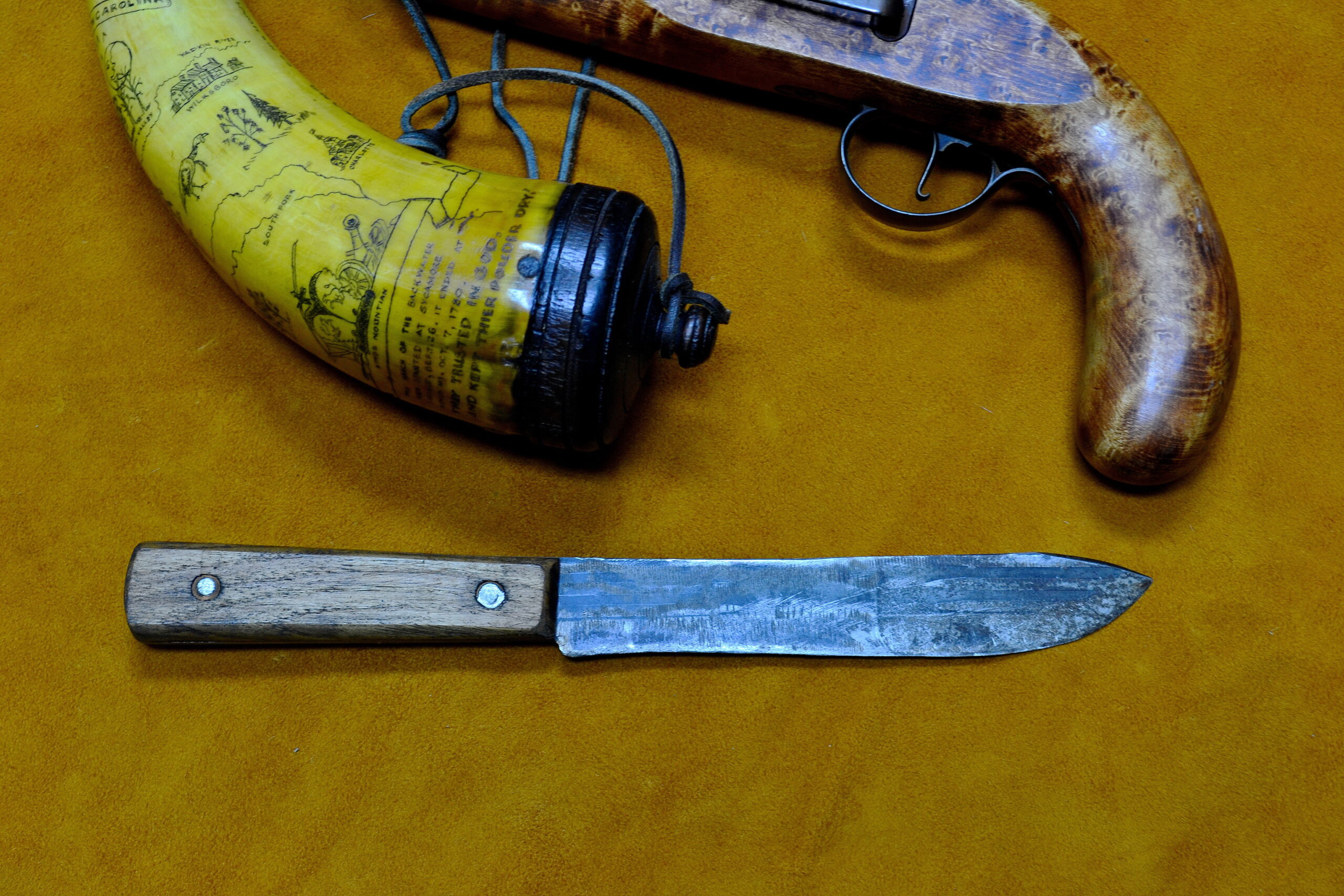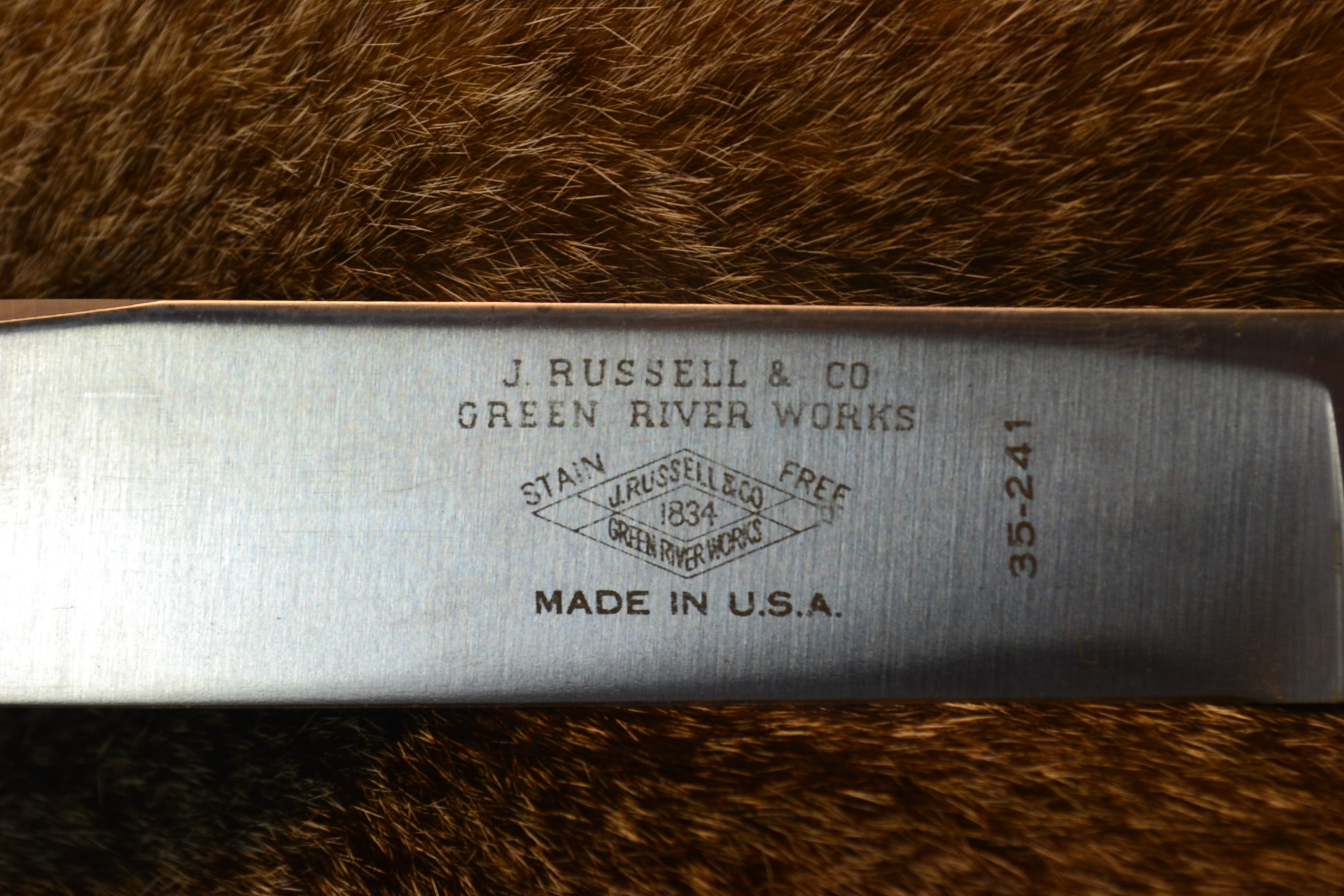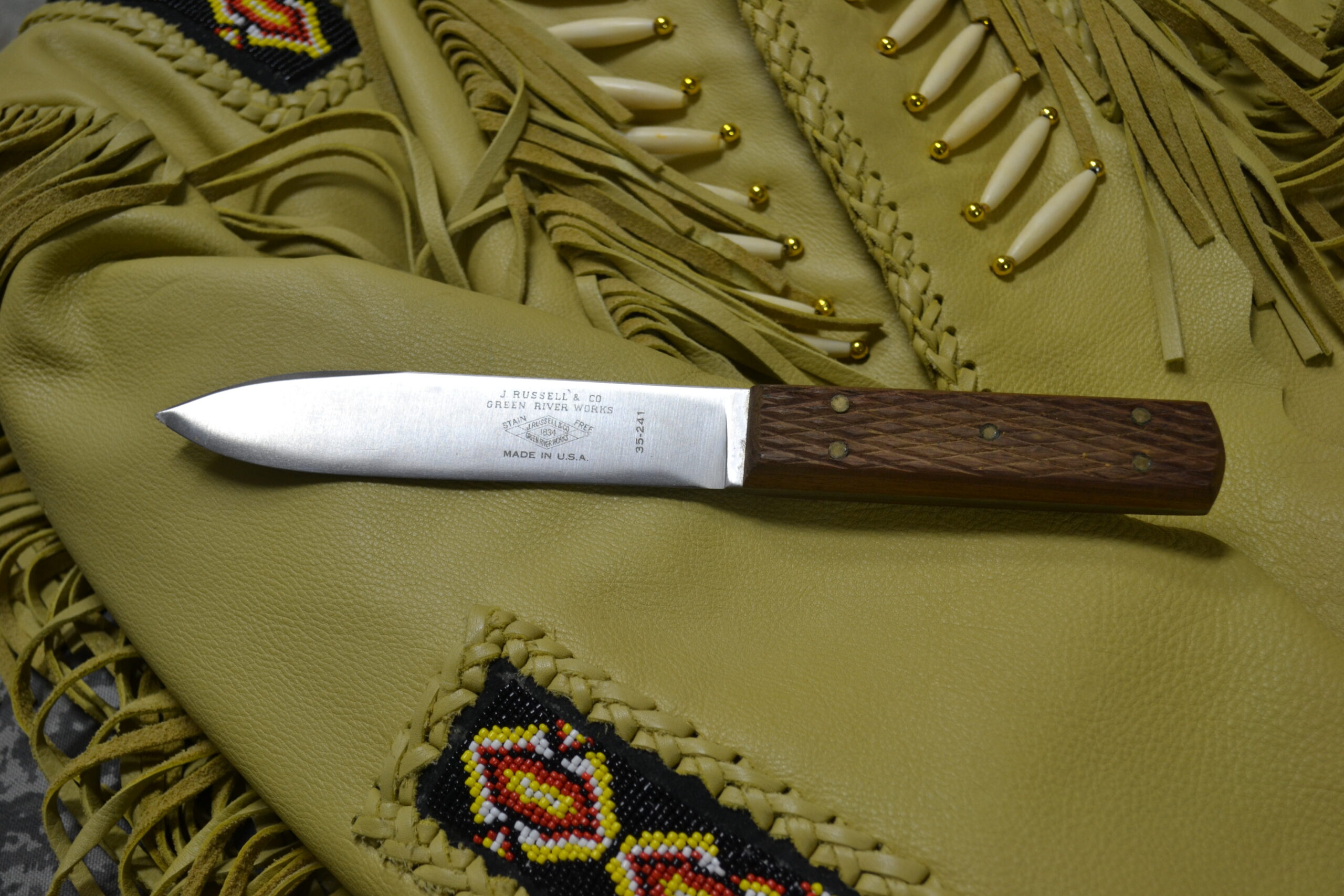Green River Knife – The Knife of the Fur Trade Era – NOT!

“Up to the Green River” is a saying attributed to the mountainmen of the fur trade era. It has been recorded that this saying had nothing to do with the Green River near which several rendezvous were held and a landmark in many mountainman stories. Instead, it is said that it meant the very best of a product or skill and referred to the high-quality J. Russell & Co. Green River Works knife. Others said the saying came from plunging a knife into an opponent up to the part of the knife blade where the J. Russell & Co. Green River Works logo was etched. Either way, the sayings have been used to imply that the Green River knife was a major item that most mountainmen obtained, or wanted, when they went west to trap beavers.
When I became interested in all things mountainman one of the first things I read, and was told by “experts”, was that the J. Russell & Co. Green River Works knife was the knife all mountain men carried, period. In fact, many went on to tell me that it was also used by many longhunters in the late 1700’s. Armed with this information I set about ordering me a J. Russell & Co. Green River Works knife kit and put together a knife and sheath to go with my mountain man outfit. I was ready for re-enactment of the 1825 – 1840 fur trade era.
It wasn’t until I became a member of the American Mountainmen and attended my first rendezvous that a wooly-looking old man in buckskins took me to task about my knife. The knowledgeable old gentleman sat me down in front of a campfire and told me the error of my thinking on the J. Russell & Co. Green River Works knife. To me, it was a wake-up call on mountainman cutlery and set me on a journey of discovery.
J. Russell & Co. Green River Works
To understand the role the Russell Green River knife played, or didn’t play, during the mountainman era of 1825 – 1840, one must first know something about John Russell and his business history. Russell was born in Greenfield, Massachusetts in 1797 and was an apprentice to his father, a goldsmith. At the age of 21 Russell left New England and went to Georgia to try his hand at business. There, after a few years, he became wealthy in the cotton business and had a desire to return home to his birthplace. He wanted to explore his dream of creating “Made in the USA” metal tool products. Sheffield, England, had enjoyed a monopoly in the U.S. for many years importing metal tools, especially hunting knives.
In 1832 Russell built a steam operated factory to manufacture chisels and axe heads made from the best of English steel, the type normally reserved for tableware. He wanted quality products. By 1834 he felt he had the experience and machinery to begin making quality knives. The English had been flooding the U.S. market with hunting knives and Russell believed he could make a knife just as good as the English, make them faster using the latest industrial technology and compete in the growing cutlery business.
Knives in England were made in steps by a cottage industry on contract with exporting companies. One home shop would make the blanks, after inspection by the company, the blanks would go to another small shop where grinding would take place. After that the knives would go to another shop where the handles would be attached. Often, they were shipped without an edge. Russell wanted to do all those steps at one factory where he controlled the quality and make the knives much faster.
Russell was off to a good start making quality, but simple, butcher/hunting knives when in 1836 his factory burned to the ground. As he raised money to rebuild, he realized that the best power source to run a factory was waterpower, so the new knife factory was located on the Green River in Greenfield, Massachusetts. The new factory was christened the Green River Works and the knives produced in the facility were stamped “J. Russell & Co. Green River Works”, thus the birth of the Green River knife.

Using waterpower, the factory was able to utilize new manufacturing equipment such as trip hammers, stamping and trimming dies, multiple grindstones and emery wheels. It was quality mass production using the best English steel available. Russell offered English knife craftsmen higher wages and attracted talented knife makers to the new factory. By 1837 he was making high quality butcher/hunting knives and selling them at prices below the English knives.
Green River Knives Arrive in the Mountains
It is not known when the first J. Russell & Co. Green River Works hunting knives first arrived as a trade good at a Rocky Mountains rendezvous, but the best guess would be in 1838 or 1839. Many scholars of the fur trade era think that it might have been 1840 before the J. Russell & Co. Green River Works knives arrived in the Rocky Mountains. The last rendezvous was held in 1840. The heavily trapped beaver populations were low and the demand for beaver fur for making top hats had gone over to silk. The fur trade era was coming to an end and the Green River knife, a late arrival, had missed most of it.
However, the mountainmen didn’t just suddenly disappear. There was a booming new hide business, buffalo skins, and many mountain men became buffalo hunters. Others became wagon train scouts, gold miners, Army scouts, hunting guides and homesteaders. Their need for quality knives continued and the J. Russell & Co. Green River Works developed a curved skinning knife and a slightly larger hunting knife named Dadley, a name given to the design by the English craftsman working for J. Russell & Company, to sell in addition to the original hunting knife. All three were called Green River Knives.

It is interesting to note that the excellent reputation of the Green River Works knives and sales of the knives were so brisk that several of the English knife makers started stamping Green River on their knives and copying the Russell designs.
Matching Dates
It is easy to compare the dates of the J. Russell & Co. Green River Works history and the dates of the fur trade era and see why the Green River knife was not in use or sold at the rendezvous between 1826 and about1838. Green River knives weren’t even thought about during most of that time. However, from about 1840 until the late 1800’s the Green River knives made their mark on western expansion and were a favorite tool of mountainmen, Native Americans, buffalo hunters, settlers, explorers and adventurers in general. Many saw service during the War Between the States.
Prior to the Russell Green River knives, the longhunters, mountainmen and early explorers depended upon a wide variety of knife suppliers and knife designs. England and France supplied many of the early knives that were available commercially. The blade designs were mostly a butcher-type, with some being a dagger design. Some were small and some large. Many of the knives used prior to Russell & Co. were made by local blacksmiths from files and rasps. Overall the butcher blade design seemed to be the most popular blade during that period.

So as the old mountainman told me at the campfire many years ago, “its O.K. to have a Green River knife in your belt as it was a favorite knife in the mountains after it became available, but just don’t go telling everyone it was the favorite knife of mountainmen throughout the fur trade era. It wern’t round then”
